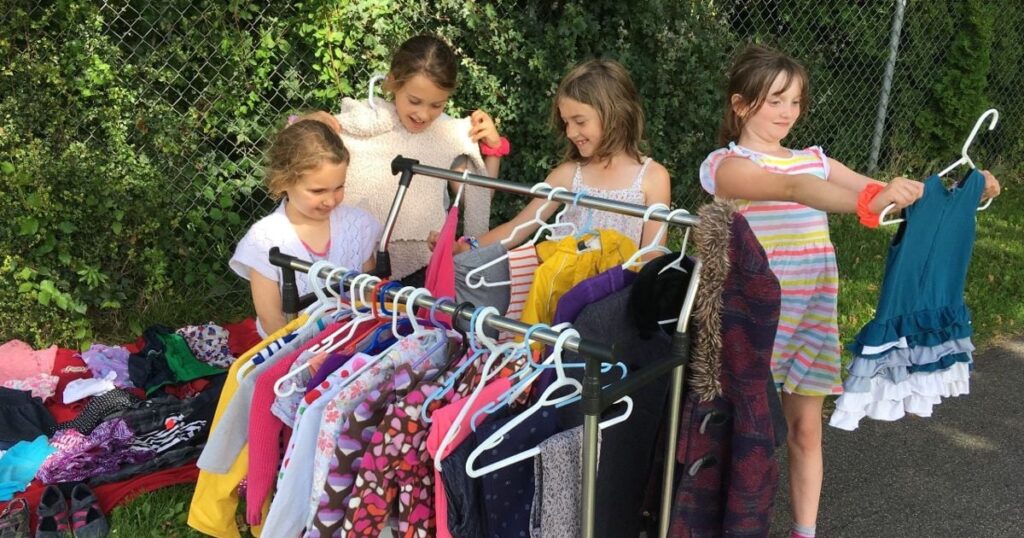Uncategorized
The Ultimate Guide to Buying Clothes for Growing Kids
Buying clothes for growing kids can be a challenge for any parent. Kids grow quickly, and what fits today might not fit in a few months. On top of that, you want to ensure they’re comfortable, stylish, and ready for whatever adventures come their way. From choosing the right size to picking durable fabrics, this guide will help you navigate the world of kids’ fashion while making sure you get the best value for your money.
1. Know the Right Size for Your Child
When shopping for your child’s clothes, choosing the right size is the first step to ensuring comfort and wearability. Kids’ sizing can be tricky since they grow at different rates, but there are a few guidelines to follow.
How to Measure:
- Height: Measure your child from head to toe. This is one of the most important factors in determining their size.
- Chest and Waist: Measure around the chest and waist at their widest point. These measurements can vary significantly, especially if your child is more athletic or has a larger build.
- Inseam: For pants, measure from the crotch to the ankle to determine the inseam length.
Size Charts and Growth Spurts:
Most brands have size charts based on age, weight, and height. However, keep in mind that children grow at different paces. It’s always a good idea to size up if you’re unsure, especially if your child is in between sizes or is experiencing a growth spurt. This will allow for room to grow while still offering a comfortable fit.
Tip: Buy clothes that are one size larger than your child’s current size for items like jeans or jackets, but consider buying shoes in the exact size to avoid discomfort.

2. Focus on Comfort
Comfort is key when it comes to kids’ clothing. Kids are always on the move—whether they’re playing sports, running around, or simply hanging out—so clothes that are too tight or itchy will make them feel uncomfortable and distracted.
Fabrics Matter:
Look for soft, breathable fabrics that won’t irritate your child’s skin. Natural fabrics such as cotton, bamboo, and wool are excellent choices. Organic cotton, in particular, is hypoallergenic and gentle on sensitive skin, making it a great choice for young children.
- Cotton: Soft, breathable, and gentle on the skin.
- Bamboo: Naturally antimicrobial and moisture-wicking.
- Wool: Provides warmth without overheating.
- Stretch fabrics: Clothes made from fabrics with a bit of stretch will move with your child, ensuring they’re comfortable during active play.
Avoid fabrics that are too stiff or itchy, such as some synthetic materials, as they can cause discomfort, especially during extended wear.
3. Choose Durable Clothing
Kids can be hard on clothes, whether they’re running around outside, climbing trees, or just being their usual energetic selves. That’s why durability is an important factor when selecting clothing.
Look for Quality Fabrics:
Opt for clothes made from sturdy, durable fabrics that can withstand repeated washing and everyday wear. Denim, thick cotton, and wool blends are great options for pants, jackets, and sweaters. Additionally, pay attention to stitching and hems—strong, reinforced stitching will help prevent clothes from falling apart too quickly.
Consider Reinforcements:
Some kids’ clothing items feature reinforced knees, elbows, or other high-stress areas. These extra reinforcements can make a huge difference in the longevity of clothing, especially for active kids who are constantly on the move.
Tip: When buying shoes, choose ones that have strong soles and durable stitching to withstand all of your child’s outdoor adventures.

4. Opt for Versatility
When it comes to kids’ fashion, versatility is key. You want to invest in pieces that can be mixed and matched easily, making it simple for your child to dress themselves without needing an entire wardrobe for every occasion.
Wardrobe Staples:
Focus on versatile items like basic t-shirts, sweatshirts, leggings, and jeans that can be paired with different tops, jackets, and shoes. Neutral colors such as gray, black, navy, and white work well with a variety of outfits. Add in a few fun patterns, such as stripes or polka dots, to keep the look interesting without sacrificing versatility.
- T-shirts: Basic tees in solid colors or simple patterns can be paired with any bottom.
- Hoodies: Great for layering, hoodies can be worn over t-shirts or under jackets.
- Pants: Jeans or chinos are a classic option that can be dressed up or down.
- Dresses and Skirts: For girls, dresses and skirts that can be paired with leggings or tights are both cute and functional.
5. Plan for Seasonal Changes
Children grow quickly, and their clothing needs change with the seasons. Be sure to plan ahead by buying clothes that will suit the upcoming weather, keeping your child warm and comfortable year-round.
Spring and Summer:
During warmer months, opt for lightweight fabrics like cotton and linen. T-shirts, shorts, tank tops, and lightweight dresses will help your child stay cool. Don’t forget to invest in hats, sunglasses, and sunscreen for additional protection from the sun.
Fall and Winter:
For colder months, layers are essential. Consider adding sweaters, jackets, and coats to your child’s wardrobe. Wool, fleece, and down-filled jackets are great choices for keeping your child warm, and you can layer them with long-sleeve shirts or thermal tops. Don’t forget about hats, gloves, and scarves to protect against the cold.
Tip: Buy clothes with adjustable cuffs or hems, such as pants with stretchy waistbands or coats with adjustable sleeves, to extend the wearability as your child grows.
6. Incorporate Their Personal Style
As your child grows, they will start to express their own preferences when it comes to clothing. Whether they have a favorite color, character, or style, let them have a say in their wardrobe choices. This will not only make shopping more fun but also help your child feel more confident in what they wear.
Trendy or Timeless?
While it’s tempting to buy the latest trends, remember that kids grow quickly, and their interests may change just as fast. It’s okay to invest in trendy pieces that they’ll enjoy now, but also include timeless staples that can be worn year after year.
Accessories:
Let your child pick out accessories like hats, backpacks, and jewelry. These items can easily be updated as your child’s tastes evolve, giving them a fun way to express themselves without requiring a full wardrobe overhaul.

7. Consider Sustainability
Sustainable clothing is becoming increasingly popular, and for good reason. Not only is it better for the planet, but sustainable fabrics are often gentler on your child’s skin. Look for brands that prioritize eco-friendly materials and manufacturing processes.
Sustainable Fabrics:
- Organic Cotton: Grown without harmful pesticides, organic cotton is softer and better for the environment.
- Recycled Polyester: Made from plastic bottles or fabric waste, recycled polyester reduces waste and requires less energy to produce.
- Bamboo: A fast-growing, eco-friendly material that is naturally antimicrobial and biodegradable.
Conclusion: Smart Shopping for Growing Kids
Buying clothes for growing kids doesn’t have to be overwhelming. By considering factors like size, comfort, durability, versatility, and sustainability, you can create a wardrobe that works for both you and your child. Remember to mix in practical, stylish pieces that will stand the test of time, and always keep in mind that your child’s personal preferences will play a big role in shaping their fashion choices. With these tips, you’ll be able to make informed decisions while ensuring your child looks great and feels comfortable as they grow.

